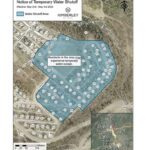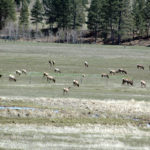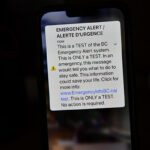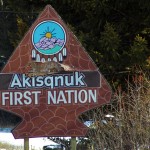Home »

Invasive spongy moth treatment spraying approved
Aerial spray treatments will be done in Cranbrook, the Lower Mainland, Kamloops and West Kelowna during the spring to eradicate spongy moths and minimize the risk they pose to forests, farms, orchards and trees, the Ministry of Forests announced this morning.
Under the direction of the B.C. Plant Protection Advisory Council’s Spongy Moth Technical Advisory Committee, the ministry plans to treat the following areas in the Interior and coastal region:
* Cranbrook: 299 hectares (ha) – area shown on map above;
* Kamloops: 80 ha;
* West Kelowna: 52 ha;
* Langley: 30 ha;
* Tsawwassen: 203 ha.
Invasive spongy moths, also known as Lymantria moths, pose a risk to B.C.’s ecosystems and economy. Spongy moth caterpillars feed on tree leaves and have defoliated sections of forests and residential areas in Ontario and the eastern United States in recent years. Untreated spongy moths risk spreading to other areas of B.C. and are a threat to urban forests and farms.
The biological insecticide used for treatment is Foray 48B, which is used in organic farming. The active ingredient Bacillus thuringiensis var kurstaki (BtK) is naturally present in urban, agricultural and forest soils in the province. It affects only moth and butterfly caterpillars after they have ingested it, the forests ministry explained.
The sprays target the emergence of spongy moth caterpillars. Btk was approved for the control of spongy moth larvae in Canada in 1961.
The ministry is planning three applications of Foray 48B between late April and mid-June 2024. Each treatment will occur seven to 10 days apart and could take up to two days to complete. Spraying in Cranbrook is expected to occur May 22 and 23.
Each spray is expected to commence at first light and end no later than 7:30 a.m. Changes in weather conditions may cause delays or cancellations of sprays with short notice.
Spongy caterpillars feed on the leaves of more than 300 species of trees and shrubs, and can damage forests, farms and orchards.
Spongy moths are unintentionally brought to B.C. on vehicles and equipment from eastern North America.
Infested locations are often subject to increased pesticide use over large areas, agriculture and transportation quarantines, vehicle checks and product certification.
Learn more about spongy moths and the upcoming sprays.
Find information about pesticide-use permits or see a map of the treatment areas.
e-KNOW







